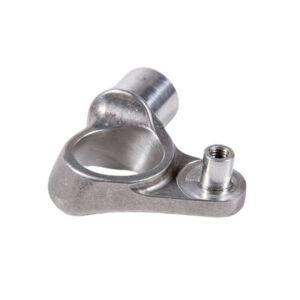precision die forging
Precision Die Forging: The Ultimate Guide to Net-Shape Forgin
In the world of metal forming, precision die forging stands out as a superior manufacturing process for creating strong, complex, and high-integrity components. But what exactly is it, and why is it the preferred choice for critical applications across industries like aerospace and automotive?
What is Precision Die Forging?
Precision die forging, also known as close-die or net-shape forging, is an advanced metal forming process. It involves shaping metal—typically aluminum, titanium, or steel alloys—between two precision-machined dies that contain a pre-designed impression of the desired part.
Unlike conventional forging, which leaves significant excess material (flash) that requires extensive machining, precision die forging is designed to produce parts that are very close to the final net shape. This results in minimal waste and significantly reduces secondary machining operations.

The Key Benefits of Precision Die Forging
Why do engineers and designers specify precision forging? The advantages are substantial:
Superior Strength & Durability: The process refines the metal’s grain structure, following the part’s contours, which results in exceptional fatigue resistance and mechanical strength.
Excellent Dimensional Accuracy: Parts are produced with tight tolerances and complex geometries that are difficult or impossible to achieve with other methods.
Significant Material Savings: By producing a net-shape part, precision forging minimizes scrap material, leading to cost savings, especially with expensive alloys.
Enhanced Surface Finish: The forged surfaces are smooth, often reducing the need for finishing operations.
Cost-Effectiveness for High Volumes: While die costs can be high, the per-part cost becomes very competitive for large production runs due to reduced machining and material waste.
Precision Die Forging vs. Conventional Forging: What's the Difference?
The primary difference lies in the outcome and efficiency.
| Feature | Precision Die Forging | Conventional Forging |
|---|---|---|
| Material Usage | Near-net shape, minimal waste | Significant flash and excess material |
| Dimensional Accuracy | High; tight tolerances | Lower; requires more machining |
| Post-Forging Machining | Minimal to none | Extensive |
| Grain Flow | Optimized for the part’s shape | Less controlled |
| Cost-Effectiveness | Better for complex, high-value parts | Better for simpler, larger parts |
In short, precision die forging is better because it delivers a more finished, higher-performance part with less overall waste and lower total cost in many scenarios.
The Precision Die Forging Process: Step-by-Step
Die Design & Manufacturing: Highly precise dies are machined from hardened tool steel based on the client’s 3D model or drawings.
Billet Preparation: A metal billet is cut to a precise volume required to fill the die cavities with minimal flash.
Heating: The billet is heated to a specific temperature to increase its malleability.
Forging: The heated billet is placed in the lower die, and the upper die is forced down under immense pressure, causing the metal to flow and fill the die cavities.
Ejection & Trimming: The forged part is ejected. A small amount of flash, if present, is trimmed off.
Finishing (Optional): Minor secondary operations like shot blasting or heat treatment may be applied to meet specific requirements.
Which Industries Use Precision Forged Components?
Precision die forging is critical in industries where component failure is not an option:
Aerospace: Turbine blades, engine disks, structural airframe components, landing gear parts.
Automotive: Connecting rods, transmission gears, crankshafts, steering components.
Oil & Gas: High-pressure valves, drill bit components, wellhead parts.
Medical: Implants and surgical instruments requiring high biocompatibility and strength.
Defense: Critical components for firearms, vehicles, and missile systems.

What Can Be Forged with This Process?
Virtually any complex, high-strength metal part can be produced through precision die forging. Common examples include:
Gears and splines
Levers and brackets
Blades and vanes
Complex structural fittings
Armored vehicle components
We Have the Capability for Your Precision Die Forging Needs
we are experts in delivering high-quality, custom precision die forging solutions. We understand that every project is unique, and we have the technology and expertise to bring your designs to life.
We can precision die forge according to your drawings. Simply send us your specifications, and our engineering team will manage the entire process—from die design and material selection to the final forging—ensuring the highest standards of quality and performance.
Ready to experience the benefits of precision die forging for your application? Contact us today for a consultation and quote. Let us be your trusted partner in creating stronger, more efficient metal components.
